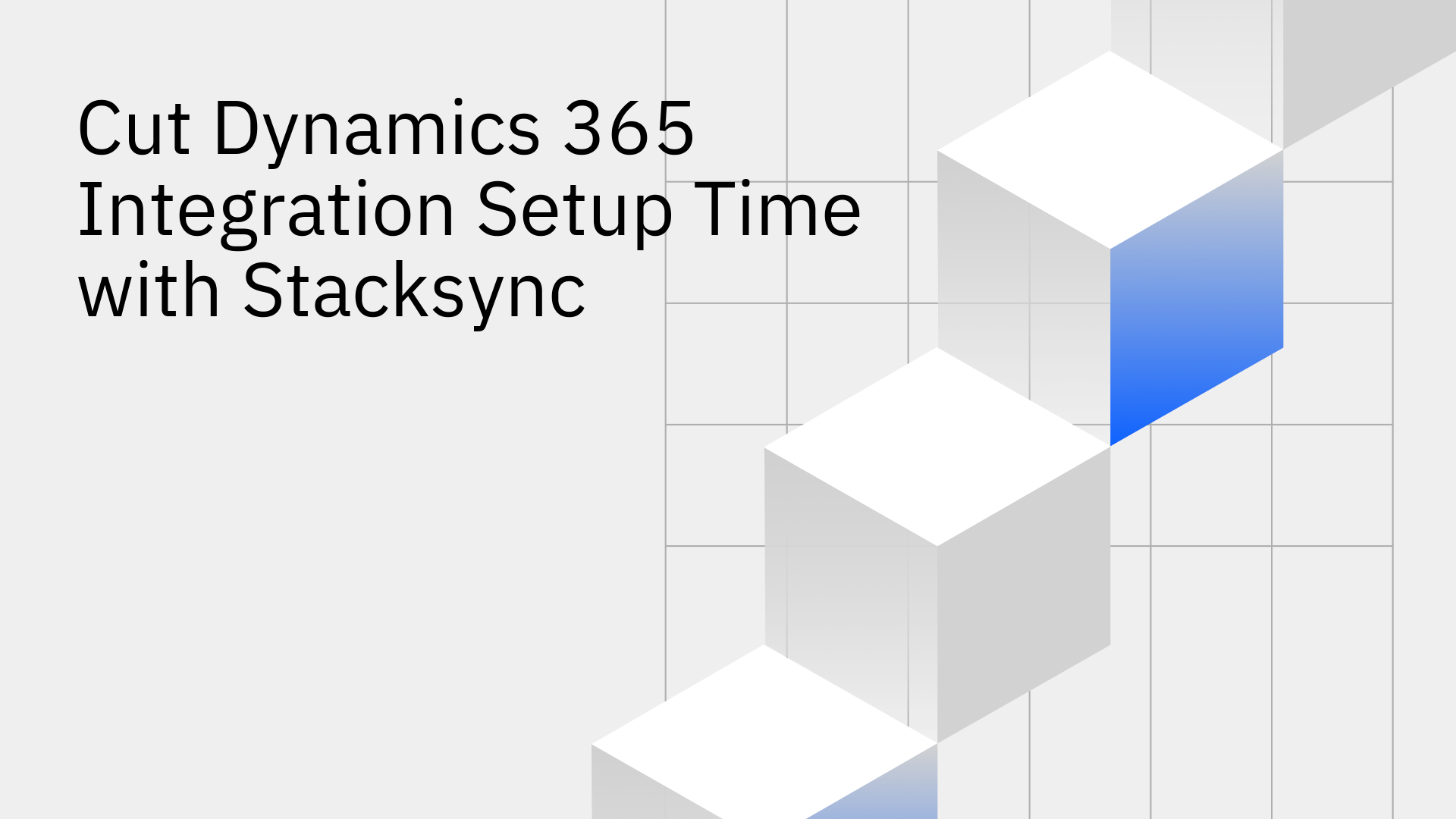
Microsoft Dynamics 365 is a powerful suite of business applications, but unlocking its full potential means connecting it with all the other tools your teams rely on. Unfortunately, integrating D365 is often a major pain point for businesses. The common challenges are all too familiar: long development cycles, unpredictable costs, and the need for specialized engineering resources that are already stretched thin. These issues significantly delay your time-to-value, leaving your teams waiting for the unified data they need.
Stacksync was built to eliminate these hurdles. We provide a modern solution designed to slash the Dynamics 365 integration setup time from months or weeks to just minutes.
Before you can speed up a process, it helps to understand what makes it so slow in the first place. Traditional integration methods are notoriously complex and resource-intensive.
The typical approach to a custom Dynamics 365 integration involves engineers writing extensive code to connect different Application Programming Interfaces (APIs). This isn't a one-time task; it requires constant maintenance and updates as APIs change.
This process ties up valuable engineering teams for extended periods as they navigate common integration pitfalls. These include figuring out how to correctly map data fields between systems, managing API rate limits to avoid getting blocked, and writing complex logic to ensure data remains consistent everywhere [1]. Each step is manual, error-prone, and requires deep technical expertise.
The longer an integration project takes, the more likely it is to run into trouble. Key challenges that prolong setup time include complex data migrations, poor user adoption due to project delays, and unexpected "scope creep," where the project's requirements expand over time.
In fact, a staggering 70% of ERP projects fail to meet their objectives, often due to these kinds of implementation challenges [5]. Integrating with cloud-based versions like Dynamics CRM Online can introduce unique difficulties compared to on-premise versions, such as network latency and different data reporting models that can catch development teams by surprise [3].
Stacksync was built from the ground up to directly address these traditional integration pains. Our platform offers a fundamentally faster and more reliable way to connect your systems.
Stacksync features a no-code interface that empowers both engineers and non-technical users (like those in Revenue Operations) to configure complex integrations without writing a single line of code. This stands in stark contrast to the weeks or months typically required for custom API development. With our intuitive user interface, you can connect your Microsoft Dynamics 365 instance, choose the data tables you want to sync, and map the fields between systems in just a few clicks.
Building reliable, real-time bidirectional synchronization is one of the most difficult and time-consuming parts of a custom integration project. You need to ensure that an update in one system is reflected in the other almost instantly, without creating conflicts or duplicate records.
Stacksync provides this capability pre-built. Our platform ensures your data is always consistent across Dynamics 365 and other connected systems like Zendesk or Front. This eliminates the risk of teams working with outdated information and solves some of the most critical challenges in CRM data management.
Another manual task that slows down setup is data mapping. Stacksync automatically maps fields between systems, even when they have different names or data types. Our platform handles the necessary data transformation and type casting behind the scenes, removing a significant burden from your team. Plus, Stacksync supports all standard and custom objects in Dynamics 365, giving you the flexibility to adapt the integration to your unique business needs.
With custom integrations, the work isn't over at launch. Your team is responsible for maintaining the servers, queues, and code that keep the integration running. Stacksync handles all of this "dirty plumbing" for you. Our platform is a fully managed data sync & workflow automation platform that scales automatically with your data volume.
Our "Smart API Rate Limits" feature intelligently manages API calls to prevent hitting quotas on platforms like Dynamics 365—a common source of failure and troubleshooting time. This is a key time-saver that allows your team to focus on core business logic instead of integration maintenance.
Reducing the Dynamics 365 integration setup time isn't just a technical win; it has a direct and positive impact on your business.
By reducing setup time from months to minutes, your business can realize the return on investment (ROI) of its software stack much faster. For instance, instead of waiting quarters to provide your sales team with a 360-degree customer view, you can deliver it in a matter of weeks. This agility gives you a powerful competitive advantage by allowing your teams to leverage a unified view of customer data to make better decisions and improve customer experiences.
Think of the engineering hours and costs saved by using a no-code platform instead of dedicating developers to a multi-month integration project. With Stacksync, those valuable resources can be reallocated to product innovation, building new features, and other revenue-generating activities that move your business forward.
Traditional Dynamics 365 integration methods are slow, expensive, and risky. They consume valuable resources and delay the benefits you expect from your software investments.
Stacksync offers a better way. Our no-code, real-time, and fully managed platform cuts integration setup time dramatically, allowing your business to become more agile, efficient, and data-driven. It's time to stop building complex integration plumbing and start syncing your data effortlessly.
Ready to see how fast it can be?
Start a free trial or book a demo with our team to experience the speed of Stacksync firsthand.